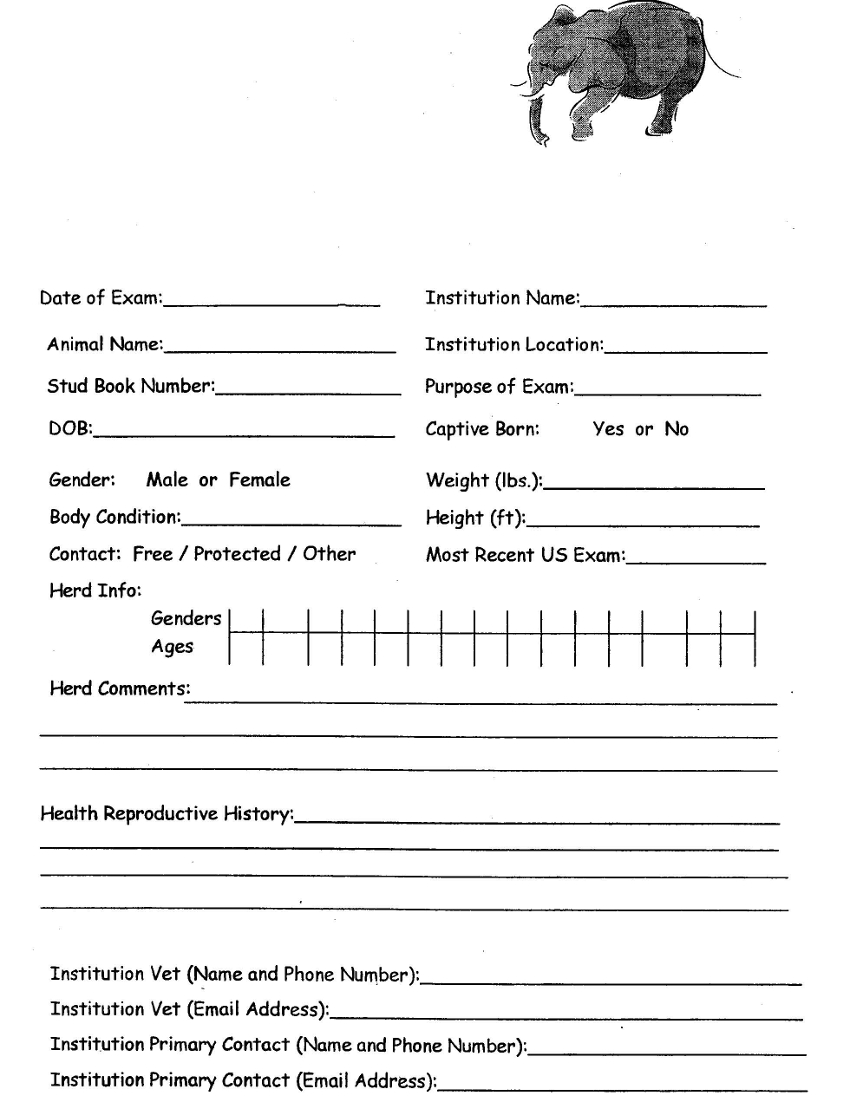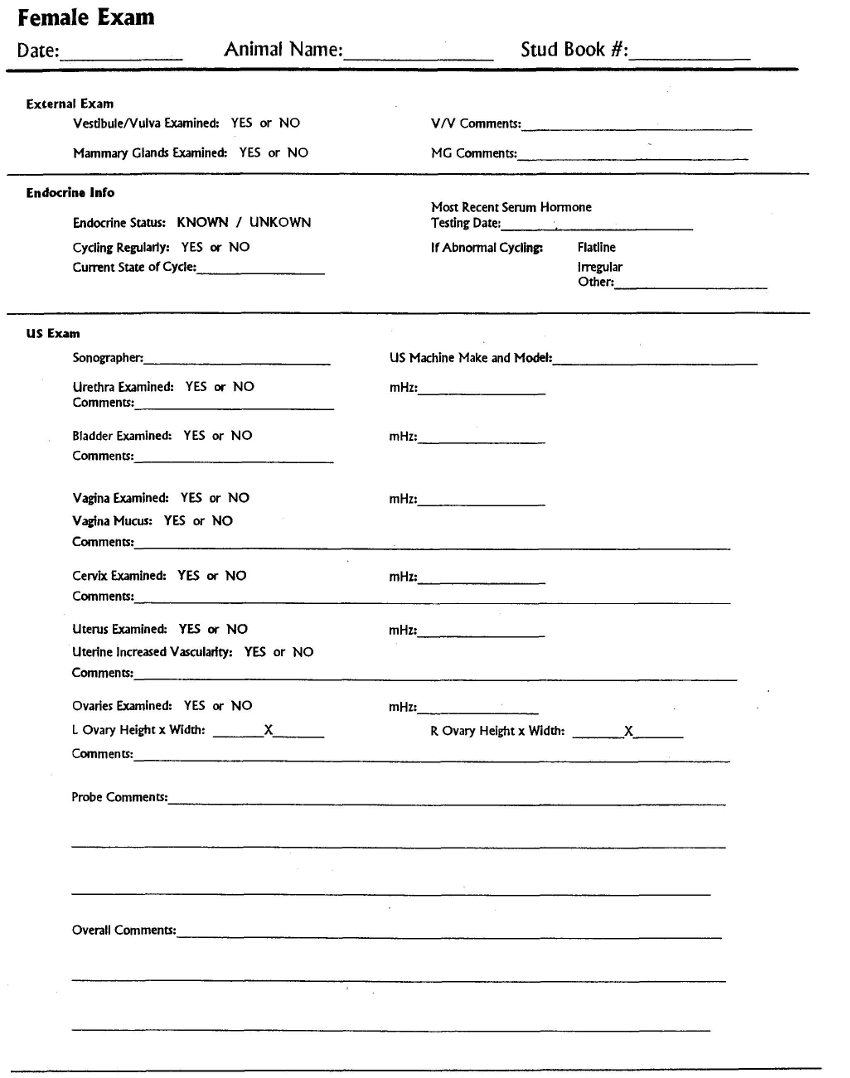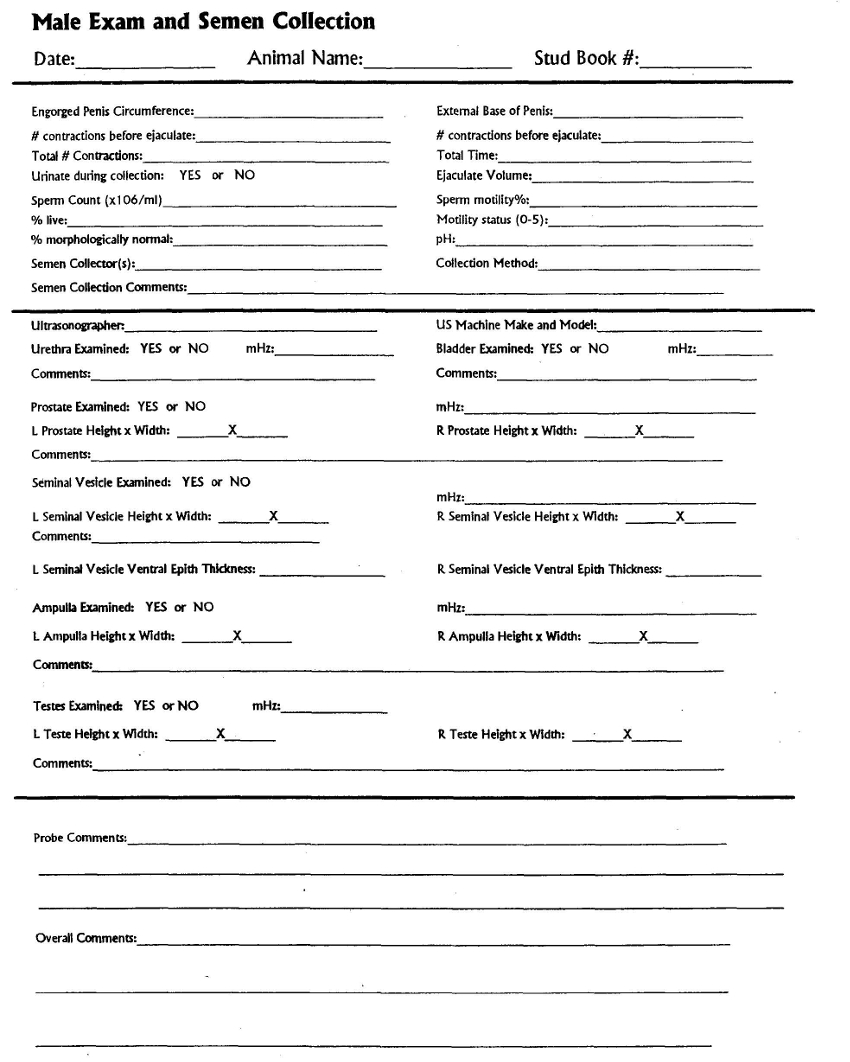Abstract
Routine use of standardized breeding soundness examination forms for male and female elephants provides data for an inter-relational database. Through queries we may answer population-based reproductive questions essential for promoting self-sustaining populations. This poster presentation demonstrates breeding soundness examination forms and accompanying database used in a pilot project to evaluate 25 elephants.
Introduction
Asian (Elaphus maximus) and African (Loxodonta africana) elephants in North America are not self-sustaining. Within 50 years, Asian elephants will be demographically extinct if fecundity does not increase four- to eight-fold.5 Reproduction and juvenile survivorship in African elephants must increase significantly in the next 10 years to promote a self-sustaining population.4 Limited resources as well as an ever-aging population underscore the urgency to prioritize and breed reproductively sound animals. Major reasons for low reproductive rates are undiagnosed reproductive disorders in females2 and reproductive dysfunction in males.3 Endocrine evaluation in conjunction with ultrasound examination and behavioral assessment are needed to identify and treat causes of reproductive failure.1 Routine breeding soundness examinations including trans-rectal ultrasound imaging, endocrine profiling, and semen analysis provide data for efficiently making breeding decisions for reproductively fit animals, as well as evaluating therapeutic interventions for reproductively unsound animals (e.g., flat-liners, poor semen quality).
Methods
A standardized approach for evaluating elephant reproductive potentials simplifies processing of data from many different animals. Information gathered from standard breeding soundness examinations, once entered into an inter-relational database may, through queries, answer population-based questions. Attendees at the first ultrasound workshop held by Dr. Dennis Schmitt at Riddle’s Elephant Breeding Farm and Sanctuary created a breeding soundness examination (BSE) form for evaluating male and female elephants. The BSE form documents findings from trans-rectal ultrasound imaging, semen analysis, retrospective endocrine assays, and breeding history. An inter-relational database (Access-MS Office 2000) was created to organize data in multiple tables, permitting querying of data, and tracking of trends.



Results
Data from more than 60 examinations of 25 elephants in North America currently populate the inter-relational database. In this presentation, we review each data element of the report form and provide related images of trans-rectal ultrasound scans and semen analyses. The utility of the breeding soundness examination forms and database will increase as we enroll more elephants. The report form may be accessed at www.senecaparkzoo.org. (VIN editor: Original link was modified on 03–03–2021).
Acknowledgments
Many individuals contributed to development of the Breeding Soundness Examination Form and collection of data, including all of the participants of the first, second, and third ultrasound workshops held at Riddles’ Elephant Breeding Farm and Sanctuary. This project would not have been possible without Scott and Heidi Riddle promoting a unique learning environment at their sanctuary. Special recognition goes to Dr. Dennis Schmitt for his pioneering efforts to develop and teach other veterinarians the art of elephant trans-rectal ultrasound imaging. I thank April Rajca-Tiribassi, Assistant Director of Finance & Administration of University of Rochester Vivarium, for her expert knowledge used to create the database. Last but not least, grateful appreciation is extended to the many elephants we were privileged to examine in order to test drive the breeding soundness examination report forms and database with the ultimate hope of someday promoting self-sustaining populations.
Literature Cited
1. Brown JL. Reproductive endocrine monitoring of elephants: an essential tool for assisting captive management. Zoo Biol. 2000;19:347–367.
2. Hildebrandt TB, Goritz F, Pratt N, Brown JL, Montali RJ, Schmitt DL, et al. Ultrasonography of the urogenital tract in elephants (Loxodonta africana and Elephas maximus): an important tool for assessing female reproductive function. Zoo Biol. 2000;19:321–332.
3. Hildebrandt TB, Hermes R, Pratt N, Fritsch G, Blottner S, Schmitt DL, et al. Ultrasonography of the urogenital tract in elephants (Loxodonta africana and Elephas maximus): an important tool for assessing male reproductive function. Zoo Biol. 2000;19:333–345.
4. Olson D, Wiese RJ. State of North American African elephant population and projections for the future. Zoo Biol. 2000;19:311–320.
5. Wiese RJ. Asian elephants are not self-sustaining in North America. Zoo Biol. 2000;19:299–309.